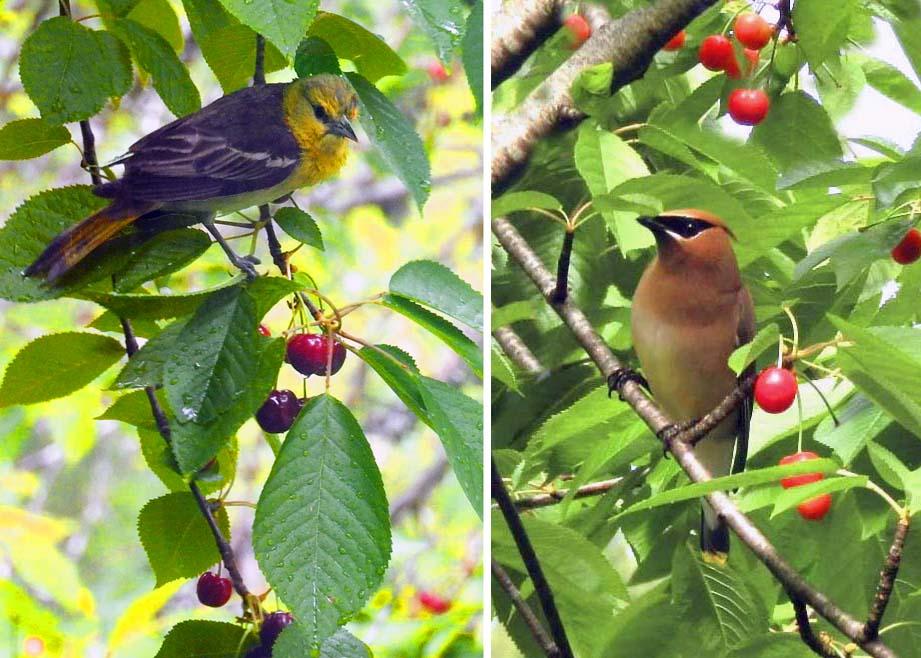
Band-tailed Pigeon in Cherries! — Columbia fasciata
Once again the ripened “wild” cherries in our neighborhood have attracted lots of birds! The trees produce small cherries that are mostly pit, but that doesn’t deter the birds! Band-tailed Pigeons were the first ones to show up this year. Soon after the Pigeons, Grosbeaks, Tanagers, Orioles, and Steller’s Jays joined in the feasting.
The red eye of the pigeon pictured above was a surprise to me! I hadn’t realized that they had red eyes! So of course I wondered why. I did some research and learned that no one really knows why, yet. There are some studies being done on bird eye color, but it’s a complicated subject.
Audubon states that the three main areas of study are: “The pigments and structures birds use to create different eye colors, the genetics underlying those diverse hues, and the evolutionary function this variation may serve.”
You may think that all red eyes are caused by the same combination of elements, but that is not the case. Audubon states; “The stark red of a cowbird’s eyes comes from unusually large blood vessels, whereas the Canvasbacks and vireos depend on two completely different types of pigment compounds.”
Because of its complexity, bird eye color is mainly a mystery right now. In the meantime, I love how the Band-tailed Pigeon’s eyes match the cherries!

Steller’s Jay (adult) — Black-headed Grosbeak (male)
Cyanocitta stelleri — Pheucticus melanocephalus
There are three main methods that birds use to eat cherries. Some, like Steller’s Jays, pick them one at a time and then take “bites” out of them while holding them with their toes. Others, like the Black-headed Grosbeak pictured above right, take bites from the cherries while they are still attached to the tree, leaving the pit behind. Still others pick a cherry, roll it around in their mouth to remove the fruit, and then spit out the pit!

Bullock’s Oriole (female) — Cedar Waxwing (adult)
Icterus bullockii — Bombycilla cedrorum
I love watching and listening to all these birds, as they feast on the cherries! The population of the cherry trees is constantly changing as the birds come and go, and there is lots of chattering and fluttering of wings going on. Some trees are more favored than others, but over the course of two to three weeks every single cherry in the neighborhood is eaten!

Columbian Black-tailed Deer (male) — Black Bear (adult)
Odocoileus hemionus columbianus — Ursus americana
Mammals also feast on the cherries! New this year, I saw a young buck eating cherries from a tree! I’ve never seen that before! I have seen Black Bears eating cherries up in the trees, but not this year. The photo above was taken in our backyard, 6 years ago!
Your questions and comments are appreciated. Please feel free to email me at northyubanaturalist@gmail.com. Thanks!
Featured Articles

Sierra Hardware Plans Extensive Repairs After Flood Damage →
December 8, 2025
Sierra Hardware faces extensive repairs after Thanksgiving flood damages store flooring and drywall.
Sheriff’s Office Accepts $60,000 Grant for New Search and Rescue Team →
December 2, 2025
Confusion Surrounds Release of the Plumas County Grand Jury’s Report →
December 4, 2025
WCB Considers Grant for Sierra Valley Tribal Land Purchase →
Updated November 22, 2025
Downieville Fire Auxiliary Hosts Annual “Holiday on Main” Event Saturday →
December 2, 2025